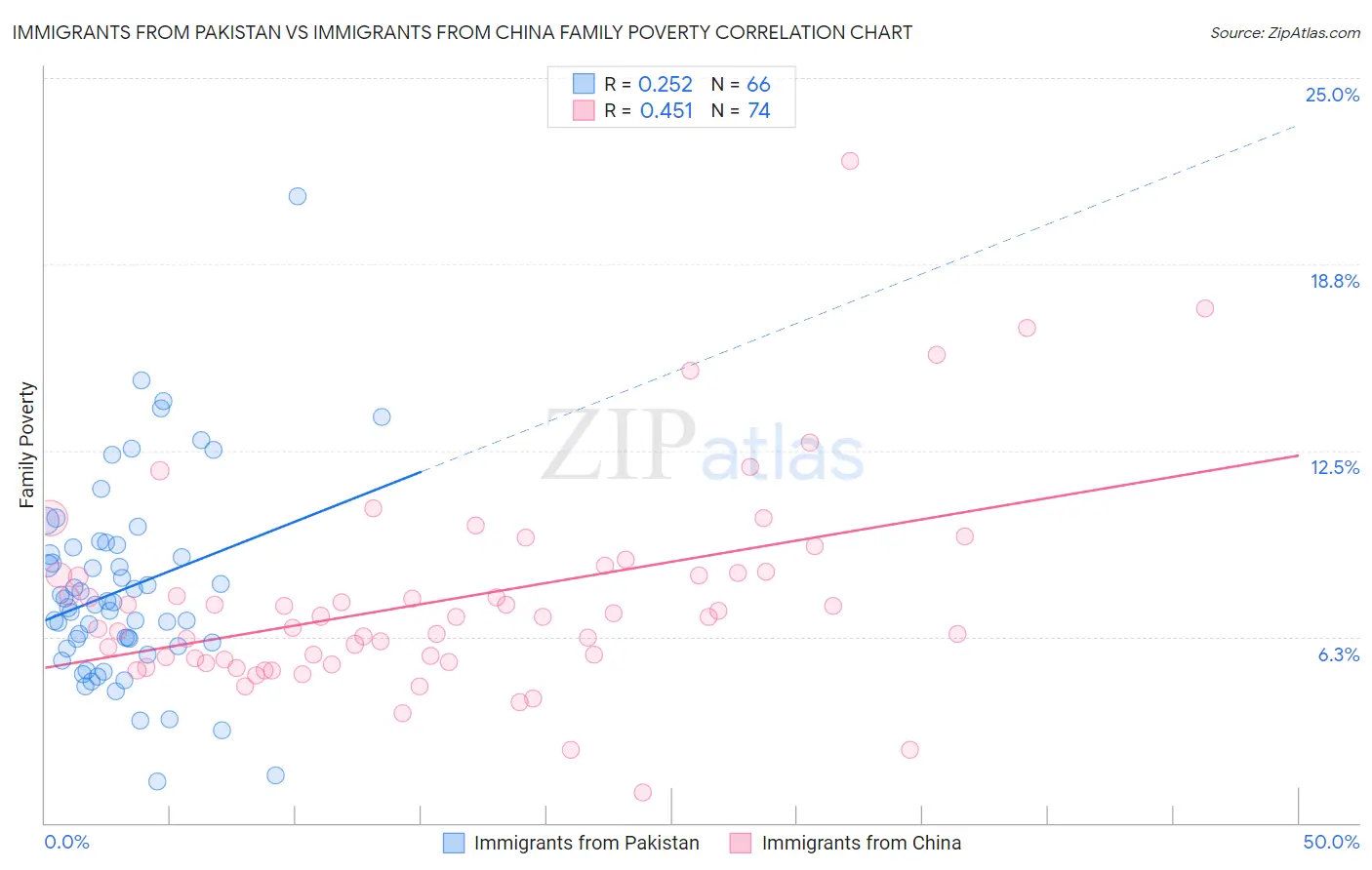Immigrants from Pakistan vs Immigrants from China Family Poverty
COMPARE
Immigrants from Pakistan
Immigrants from China
Family Poverty
Family Poverty Comparison
Immigrants from Pakistan
Immigrants from China
8.0%
FAMILY POVERTY
96.6/ 100
METRIC RATING
94th/ 347
METRIC RANK
7.8%
FAMILY POVERTY
98.1/ 100
METRIC RATING
74th/ 347
METRIC RANK
Immigrants from Pakistan vs Immigrants from China Family Poverty Correlation Chart
The statistical analysis conducted on geographies consisting of 283,475,243 people shows a weak positive correlation between the proportion of Immigrants from Pakistan and poverty level among families in the United States with a correlation coefficient (R) of 0.252 and weighted average of 8.0%. Similarly, the statistical analysis conducted on geographies consisting of 454,907,220 people shows a moderate positive correlation between the proportion of Immigrants from China and poverty level among families in the United States with a correlation coefficient (R) of 0.451 and weighted average of 7.8%, a difference of 2.4%.

Family Poverty Correlation Summary
| Measurement | Immigrants from Pakistan | Immigrants from China |
| Minimum | 1.4% | 1.0% |
| Maximum | 21.0% | 22.2% |
| Range | 19.6% | 21.2% |
| Mean | 7.8% | 7.5% |
| Median | 7.4% | 6.9% |
| Interquartile 25% (IQ1) | 5.9% | 5.5% |
| Interquartile 75% (IQ3) | 9.2% | 8.4% |
| Interquartile Range (IQR) | 3.3% | 2.9% |
| Standard Deviation (Sample) | 3.3% | 3.5% |
| Standard Deviation (Population) | 3.3% | 3.4% |
Demographics Similar to Immigrants from Pakistan and Immigrants from China by Family Poverty
In terms of family poverty, the demographic groups most similar to Immigrants from Pakistan are Tlingit-Haida (8.0%, a difference of 0.11%), Czechoslovakian (8.0%, a difference of 0.29%), Immigrants from Italy (8.0%, a difference of 0.53%), Immigrants from Denmark (8.0%, a difference of 0.69%), and Immigrants from England (8.0%, a difference of 0.69%). Similarly, the demographic groups most similar to Immigrants from China are Immigrants from Croatia (7.8%, a difference of 0.14%), Immigrants from Latvia (7.9%, a difference of 0.37%), Ukrainian (7.9%, a difference of 0.38%), Immigrants from North America (7.9%, a difference of 0.49%), and Immigrants from Europe (7.9%, a difference of 0.57%).
| Demographics | Rating | Rank | Family Poverty |
| Immigrants | China | 98.1 /100 | #74 | Exceptional 7.8% |
| Immigrants | Croatia | 98.1 /100 | #75 | Exceptional 7.8% |
| Immigrants | Latvia | 98.0 /100 | #76 | Exceptional 7.9% |
| Ukrainians | 98.0 /100 | #77 | Exceptional 7.9% |
| Immigrants | North America | 97.9 /100 | #78 | Exceptional 7.9% |
| Immigrants | Europe | 97.8 /100 | #79 | Exceptional 7.9% |
| English | 97.8 /100 | #80 | Exceptional 7.9% |
| Irish | 97.8 /100 | #81 | Exceptional 7.9% |
| Immigrants | Poland | 97.8 /100 | #82 | Exceptional 7.9% |
| Slovaks | 97.7 /100 | #83 | Exceptional 7.9% |
| British | 97.5 /100 | #84 | Exceptional 7.9% |
| Immigrants | Asia | 97.4 /100 | #85 | Exceptional 7.9% |
| Scottish | 97.3 /100 | #86 | Exceptional 7.9% |
| Belgians | 97.3 /100 | #87 | Exceptional 8.0% |
| Serbians | 97.2 /100 | #88 | Exceptional 8.0% |
| Immigrants | Denmark | 97.1 /100 | #89 | Exceptional 8.0% |
| Immigrants | England | 97.1 /100 | #90 | Exceptional 8.0% |
| Immigrants | Italy | 97.0 /100 | #91 | Exceptional 8.0% |
| Czechoslovakians | 96.8 /100 | #92 | Exceptional 8.0% |
| Tlingit-Haida | 96.7 /100 | #93 | Exceptional 8.0% |
| Immigrants | Pakistan | 96.6 /100 | #94 | Exceptional 8.0% |